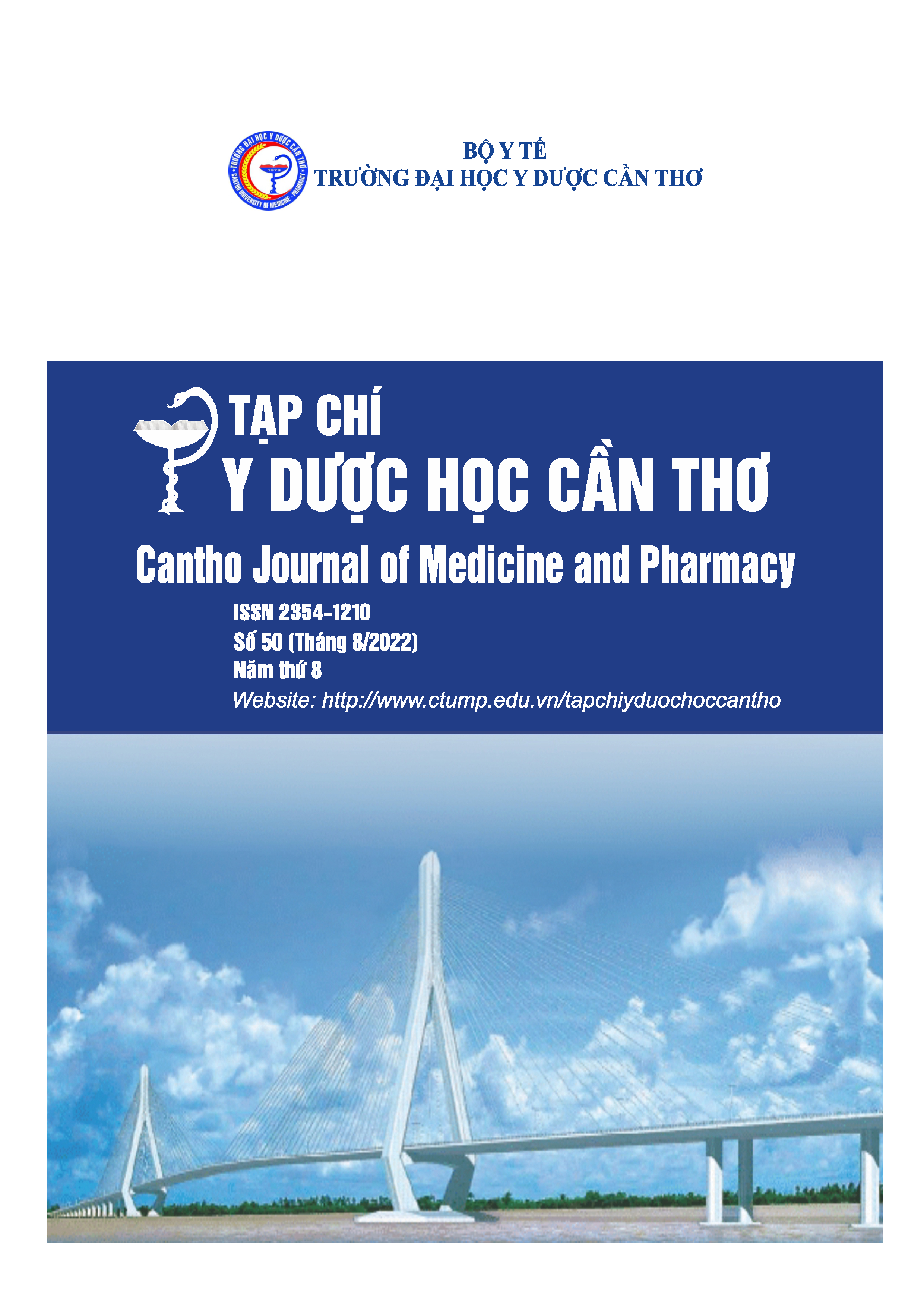RISK OF FALLS IN ELDERLY AT DONG XOAI CITY, BINH PHUOC PROVINCE AND RELATED FACTORS IN 2022
Main Article Content
Abstract
Background: In the elderly, falls was the leading cause of injury. The risk of falls and fall-related injuries increased with age. Objectives: To determine the rate of falling risk of the elderly and related factors. Materials and method: A cross-sectional descriptive study on 118 elderly people who was living in Dong Xoai city, Binh Phuoc province from 12/2021 to 3/2022. Results: The rate of high risk of falling was 38.1% and low risk of falling was 61.9%. Factors related to the risk of falling: The age group 60-69 years old had a lower risk of falling than other age groups; subjects with neurological and joint diseases had a higher risk of falling than those without the disease; subjects using diuretics and tranquilizers had a higher risk of falling than those who did not. The risk of falls was higher in subjects with a history of falls within 6 months than in subjects with no history of falls (with p<0.05). Conclusion: The risk of falls in the elderly was quite high. Therefore, it was necessary to have supportive interventions to prevent falls for the elderly.
Article Details
Keywords
Falls, the elderly, related factors
References
2. Nguyễn Thị Hương (2019), “Hiệu quả huấn luyện sử dụng công cụ đánh giá té ngã Johns Hopkins cho điều dưỡng”, Y Học TP. Hồ Chí Minh, 23(5), tr.89-94.
3. Tổng cục Thống kê (2019), “Kết quả chủ yếu Điều tra biến động dân số và kế hoạch hóa gia đình thời điểm 1/4/2017”, Hà Nội, tr.22-23.
4. Nguyễn Văn Trí, Nguyễn Trần Tố Trân, Tôn Nữ Tường Vi (2017), “Tần suất hạ huyết áp tư thế đứng và té ngã ở người cao tuổi trong cộng đồng Quận 4 thành phố Hồ Chí Minh”, Y Học TP. Hồ Chí Minh, 21(1), tr.168-172.
5. Trung tâm Y tế thành phố Đồng Xoài (2021), Báo cáo công tác Y tế - Dân số năm 2021.
6. Falcão R. M. M, Costa K, Fernandes M, et al. (2019), Risk of falls in hospitalized elderly people, Rev Gaucha Enferm, 40(spe), pp.e20180266.
7. Smith A. d. A, Silva A. O, Rodrigues R. A. P, et al. (2017), “Assessment of risk of falls in elderly living at home”, Revista latino-americana de enfermagem, 25, pp.e2754-e2754.
8. Kim K.-I, Jung H.-K, Kim C. O, et al. (2017), “Evidence-based guidelines for fall prevention in Korea”, The Korean journal of internal medicine, 32(1), pp.199-210.
9. Wang J, Chen Z, Song Y (2010), “Falls in aged people of the Chinese mainland: epidemiology, risk factors and clinical strategies”, Ageing Res Rev, 9 Suppl1, pp.S13-7.
10. WHO (2021), Falls. https://www.who.int/news-room/fact-sheets/detail/falls
11. Zasadzka E B. A, Roszak M, Pawlaczyk M, (2015), “Assessment of the risk of falling with the use of timed up and go test in the elderly with lower extremity osteoarthritis”, Clin Interv Aging 10, pp.1289-1298.
12. Vieira L. S, Gomes A. P, Bierhals I. O, et al. (2018), “Falls among older adults in the South of Brazil: prevalence and determinants”, Revista de Saúde Pública, 52(0), pp.22.


